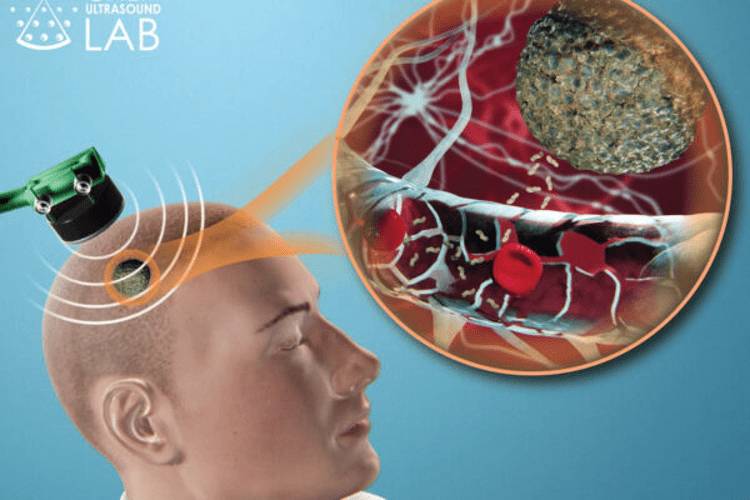Glioblastomas are aggressive brain tumors that are commonly diagnosed through a risky and invasive surgical biopsy. A team of researchers led by Hong Chen, PhD at Washington University in St. Louis has developed a noninvasive diagnostic method that may one day replace the tissue biopsy with a simple blood test.
Chen, associate professor of biomedical engineering at the McKelvey School of Engineering and of radiation oncology in the School of Medicine; Eric Leuthardt, MD, professor of neurosurgery at the School of Medicine and of biomedical engineering at McKelvey Engineering; and the team tested the method in both small and large animal models and found significantly improved detection and diagnostic sensitivity for brain tumors via a simple blood sample. Results of the study are published online in the journal Theranostics, Nov. 10.
The method, known as sonobiopsy, uses focused ultrasound to target tumors deep in the brain. Once located, the researchers inject microbubbles into the blood that travel to the ultrasound-targeted tissue and pulsate, which safely opens the blood-brain barrier. The temporary openings allow biomarkers, such as DNA, RNA and proteins, from the tumor to pass through the blood-brain barrier and release into the blood.
Chen, Leuthardt and the team have been working on their focused ultrasound-enabled liquid biopsy (sonobiopsy) method for several years, first conducting a feasibility study in mice, followed by a safety evaluation study, and most recently, another study in pigs. While blood-based liquid biopsy has been used in human patients with other cancers for personalized medicine, progress in extending the method to human brain cancer has been limited.
In the new research, the team, including Christopher Pacia, first author and a biomedical engineering doctoral student in the Chen ultrasound lab, found that the sonobiopsy method boosted detection of genes highly expressed in the mouse model of glioblastoma, EGFRvIII. The DNA levels of EGFRvIII circulating in the bloodstream of the group that underwent sonobiopsy was 920 times greater than the group that underwent conventional blood-based liquid biopsy. Further, detection of another circulating tumor genetic marker, TERT C228T ctDNA, was 10-fold higher after sonobiopsy. In addition, the method improved diagnostic sensitivity from 7.14% to 64.71% for EGFRvIII and from 14.29% to 45.83% for TERT C228T. The team found no increase in tissue damage in the tumor region of interest after the sonobiopsy.
